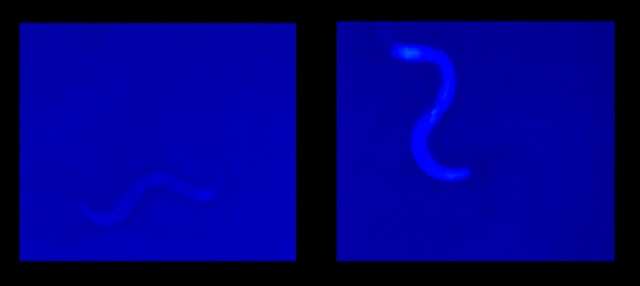Blue cells of death mark the end of a worm’s life
Ars Technica » Scientific Method 2013-07-26

Never has “feeling blue” carried such a sense of finality. A new study has revealed that the simple worm (Caenorhabditis elegans) meets its death in a flash of azure. And according to researchers, the blue light shows that dying may be a coordinated process that could probably be delayed.
Scientists have known for many years that cells can die in two ways. Necrosis occurs when either the cell’s machinery breaks down with age or exposure to trauma damages the cell beyond repair. Apoptosis is a programmed process triggered on demand, by which even healthy cells can undergo a series of changes resulting in an orderly death.
But when it comes to multicellular organisms (such as humans) dying, defining the exact mechanisms becomes more complicated. It cannot simply be explained by a bunch of cells dying independently. How do you define the precise moment when an animal stops being alive, and what is the sequence of events leading to death?
Read 9 remaining paragraphs | Comments




